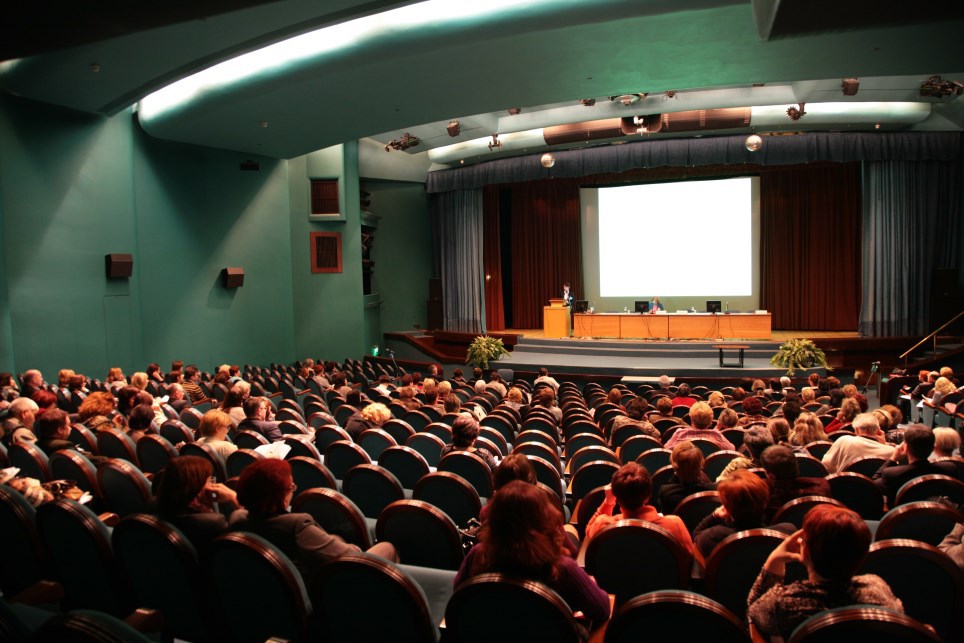
Top sessions to attend at SfN2016
This year’s annual meeting of the Society for Neuroscience is just around the corner and to help you get ready for what will hopefully be a warm and sunny visit to Southern California, Scientifica has created a list of just some of the great sessions that will be taking place in the San Diego Convention Center.
From November 12-16, there will be a plethora of lectures, symposia, minisymposia, nanosymposia, professional development workshops and posters looking at all the latest research and technical developments that Neuroscience can offer. With around 30,000 attendees from over 80 countries and more than 800 sessions, this conference promises to be just as good, if not better than last year’s.
To plan your personal itinerary for the conference, visit the Neuroscience Meeting Planner. For all other information related to the conference visit the Neuroscience 2016 website.
Lectures

SESSION 9 - PRESIDENTIAL SPECIAL LECTURE - Tuning Auditory Circuits for Vocal Communication - Sarah M.N. Woolley
November 12, 2016, 5:15 - 6:25 PM SDCC Ballroom 20
Social communication reflects the coordinated development of sensory and motor circuits around signals that convey information. The young brain, learning to communicate with hearing and voice, builds auditory and vocal motor circuits that are functionally coupled to perceive and produce similar signals. This lecture will describe progress made using songbirds to understand how species' identity dictates the capacities and limits of vocal learning, how early experience shapes auditory and vocal circuits, and how species and learning combine to map auditory tuning onto vocal acoustics.
SESSION 105 - Dendritic Spines Shaping Memory and Behaviours - Haruo Kasai
November 13, 2016, 10:00 - 11:10 AM SDCC Ballroom 20
Spiny protrusions of dendrite, called dendritic spines, are the major postsynaptic sites for excitatory synaptic transmission in the brain. New studies indicate that spines act as memory elements, and do so by their structural plasticity. Such cell motility regulates functional connectivity, and enables Hebbian and reinforcement learning in the cortex and basal ganglia. Motility can be spontaneous, and such fluctuations may determine memory persistence and stabilize recurrently connected networks. Spine motility connects cell biology to mental functions and disorders.
SESSION 189 - Circuits for Movement - Silvia Arber
November 13, 2016, 1:00 - 2:10 PM SDCC Ballroom 20
Movement is the behavioural output of the nervous system. Animals carry out an enormous repertoire of distinct actions, spanning from seemingly simple repetitive tasks like walking, to more complex movements such as forelimb manipulation tasks. This lecture will focus on recent work elucidating the organization and function of neuronal circuits at the core of regulating distinct motor behaviours. It will show that dedicated circuit modules within different brainstem nuclei and their interactions in the motor system play key roles in action diversification.
SESSION 378 - PRESIDENTIAL SPECIAL LECTURE - Toward Whole-body Connectome in Drosophila - Ann-Shyn Chiang
November 14, 2016, 5:15 - 6:25 PM SDCC Ballroom 20
Our brains receive information from sensory neurons about our external environment and internal organs. To understand how the brain processes information and initiates motor outputs, scientists are constructing complete wiring diagrams called “connectomes” that map all neural connections in the brain and body. Taking Drosophila melanogaster as an example, this lecture will address challenges in building whole-body connectomes and how that knowledge may help us better understand normal function and treat disease.
SESSION 562 - Cortical Circuits of Vision - Massimo Scanziani
November 15, 2016, 1:00 - 2:10 PM SDCC Ballroom 20
The diversity of neuron types and synaptic connectivity patterns in the cerebral cortex is astonishing. How this cellular and synaptic diversity contributes to cortical function is just beginning to emerge. Using the mouse visual system as an experimental model, this lecture will discuss the mechanisms by which excitatory and inhibitory interactions among distinct neuron types contribute to the most basic operations in visual cortex. This lecture will highlight how a functional and structural analysis of cortical circuits allows us to bridge the gap between system and cellular neuroscience.
SESSION 569 - FRED KAVLI HISTORY OF NEUROSCIENCE LECTURE - Sixty Years of Research on Neurotransmitter Release in the Light of Recent Results from the Calyx of Held Synapse - Erwin Neher
November 15, 2016, 2:30 - 3:40 PM SDCC Ballroom 20
In the 1950s, Sir Bernhard Katz and co-workers laid the foundation for our present understanding of neurotransmitter release and its short-term plasticity. Their terms “units available” (for release) and “units responding to one impulse” have been replaced with terms like vesicle pools, release probability, and quantal content. Since then, the description of certain aspects of short-term plasticity has gained considerable complexity. Research on the Calyx of Held has described this complexity including heterogeneity of vesicle pools, refractoriness of release sites, and a phenomenon called “superpriming.” Nevertheless, this talk will argue that the original Katz view is still a useful framework on which to build.
SESSION 654 - Regulation of Neural Stem Cell Fate During Development and in the Adult - Yukiko Gotoh
November 16, 2016, 8:30 - 9:40 AM SDCC Ballroom 20
This lecture will discuss how neocortical neural stem/progenitor cell (NPC) fate is regulated in a developmental stage-dependent manner. This lecture will also focus on the mechanisms underlying long-term maintenance of adult neural stem cells (NSCs), the differences between embryonic NPCs and adult NSCs, and the embryonic origin of adult NSCs.
Symposia

SESSION 472 - Neuroepigenetics – Chair: Li-Huei Tsai
November 15, 2016, 8:30 - 11:00 AM SDCC 6A
The aim of the symposium is to discuss the role of epigenetic mechanisms of neuronal diversity, the plasticity of neuronal networks, and their alteration during various neurological disorders. The symposium will focus on the chromatin-based mechanism of neuronal gene expression regulation, as well as on the epigenetic foundations of memory and social behavior, and how pharmacological compounds that target specific epigenetic processes can interfere with the diseases
Minisymposia
SESSION 191 - Building the Cerebral Cortex: Mechanisms That Mediate Migration, Specification, and Axonal Outgrowth – Chair: Jill M. Weimer
November 13, 2016, 1:30 - 4:00 PM SDCC 29D
Over the past decade, we have learned that the movement and differentiation of newly born neurons in the developing cerebral cortex are orchestrated through a close interplay between cell intrinsic signaling events and nonautonomous cues from the environment. Recent studies have uncovered novel aspects of this cellular interplay in regulating both migration and the initial stages of differentiation. In this minisymposium, we will discuss several emerging key players in this process and how perturbation in these specific signaling hubs can contribute to a number of neural pediatric disorders.
SESSION 279 - Mesoscale Imaging of Cortical Function and Dysfunction in Mice – Chair: Jack Waters
November 14, 2016, 8:30 - 11:00 AM SDCC 29D
The skulls of mice are relatively transparent, permitting relatively non-invasive optical access to the neocortex. This minisymposium presents six recent studies that have leveraged optical access and activity-dependent indicators and opsins to probe the function and dysfunction of the neocortex at the "mesoscale" recording and modulating the activities of cortical areas in mice performing behavioral tasks.
Nanosymposia
SESSION 116 - Techniques in Electrophysiological Recording and Stimulation
November 13, 2016, 8:00 - 10:00 AM SDCC 7B
SESSION 385 - Spatial Attention and Working Memory
November 14, 2016, 1:00 - 4:00 PM SDCC 7B
SESSION 388 - Neural Basis of Emotions
November 14, 2016, 1:00 - 3:30 PM SDCC 2
SESSION 580 - Advanced Imaging Methods and Probes
November 15, 2016, 1:00 - 4:15 PM SDCC 7B
SESSION 774 - New Electrode Technologies
November 16, 2016, 1:00 - 4:15 PM SDCC 1B
Professional Development Workshops
SESSION PDW07 - A Guide to Publishing in Journals
November 13, 2016, 9:00 - 11:00 AM SDCC 31C
Journals exist to disseminate new research findings and the latest new thinking to scholarly and professional communities worldwide. This workshop will present a rare opportunity to gain insights into journal publishing from the Editors and Publishers of Elsevier journals such as Neuroscience, Brain Research, and Neuropharmacology on how to write and review a paper, new publishing initiatives and publishing ethics.
SESSION PDW11 - Meeting Expectations: NIH Review Criterion on Scientific Rigor and Reproducibility
November 13, 2016, 3:00 - 5:00 PM SDCC 31C
In January 2016, the NIH introduced new review criteria concerning Scientific Rigor and Reproducibility that affect virtually all research grant applications. Applicants must now specifically address 1) the scientific premise of the proposed research; 2) how the proposed research is designed to ensure scientific rigor and reproducibility; 3) consideration of relevant biological variables; and 4) the authentication of key biological and chemical resources. In this workshop, representatives from NIH and the scientific community will offer knowledgeable and practical advice to help both novice and experienced grant applicants navigate the requirements of this new policy.
SESSION PDW13 - How to Present Science Using Visual Tools
November 14, 2016, 9:00 - 11:00 AM SDCC 30C
It is important to present science in a way that is visually appealing to audiences. This workshop will feature speakers with experience developing science videos, animations, graphics, and tools that engage audiences. The session will explore the significance of using compelling visuals to communicate science, and discuss available tools. Speakers will share tips on how to present science in a more visually compelling way. The workshop’s goal is to inform the neuroscience community about benefits of sharing information in a way that peaks the interest of scientists and laypersons
Posters

November 12, 2016, 1:00 - 5:00 PM Halls B-H
Session 047 - Transplantation and Integration of Neural Precursors in the Adult Brain
47.26 / S9 - Combining optogenetics and in vivo two photon calcium imaging to explore the functional impact of newborn neurons in the mouse olfactory bulb
Session 092 Optogenetic Approaches to Studying Neural Circuit Function
92.27 / KKK25 - In vivo all-optical electrophysiology of neuronal structures via two-photon microscopy of genetically-encoded calcium indicators and optogenetics
92.28 / KKK26 - Simultaneous two-photon calcium imaging and optogenetics using GCaMP6 and ChrimsonR
Session 094 - Light Microscopy: Advances in Technologies, Software, and Analysis
94.08 / KKK51 - Algorithmic optimization of DIC microscopy images for electrophysiology and neuronal-tissue reconstruction
November 14, 2016, 1:00 - 5:00 PM Halls B-H
Session 434 - Striate Cortex Plasticity I
434.16 / SS24 - Reprograming of neuronal ensembles in primary visual cortex with two-photon optogenetics In vivo
Session 468 - Optical Methods: Probe Development and Applications
468.22 / NNN12 - High-speed recording of neural activity in awake mice and flies using a fluorescent voltage indicator
468.23 / NNN13 - Subcellular localization of algal light-sensitive anion channelrhodopsin ACR2 and cation channelrhodopsin ChR2 in mammalian neurons
November 16, 2016, 1:00 - 5:00 PM Halls B-H
Session 716 Visual Sensory-Motor I
Presentation 716.09 / NN1 Probing a sensorimotor transformation in dorsomedial frontal cortex using electrophysiology and optogenetics
Session 751 Molecular Techniques
Presentation 751.01 / LLL65 Monomeric far-red and near-infrared fluorescent proteins for neuroimaging
Session 752 Cellular and Network Electrophysiological Approaches
Presentation 752.13 / MMM33 Fully automated closed-loop two-photon guided patch-clamp electrophysiology In vivo
Session 753 Optical Methods: Imaging and Photostimulation
Presentation 753.08 / MMM50 Spatially and temporally controlled photomanipulation of neurons
Presentation 753.09 / MMM51 Simultaneous fast imaging and manipulation of neuronal networks In vivo
The full programme is now available online. Alternatively, you can download the Neuroscience 2016 app to plan and check your itinerary on your mobile device.
And don’t forget to come and see the Scientifica team on booth #3025 during your visit!
If you’re interested in reading more useful articles for Neuroscience 2016, why not check out our San Diego restaurant guide and city information.

)